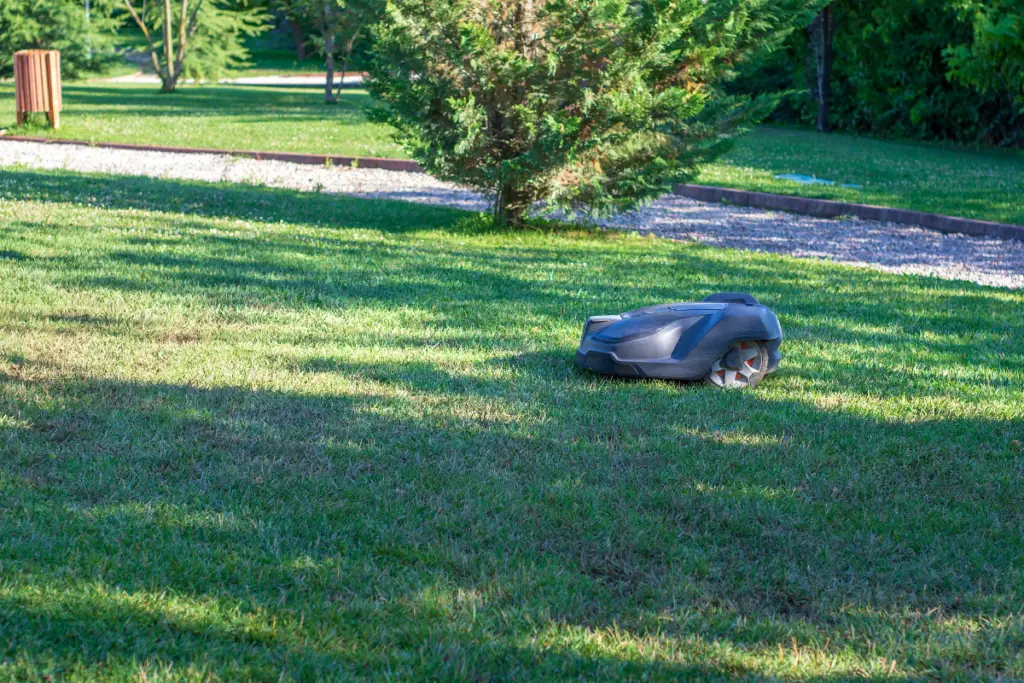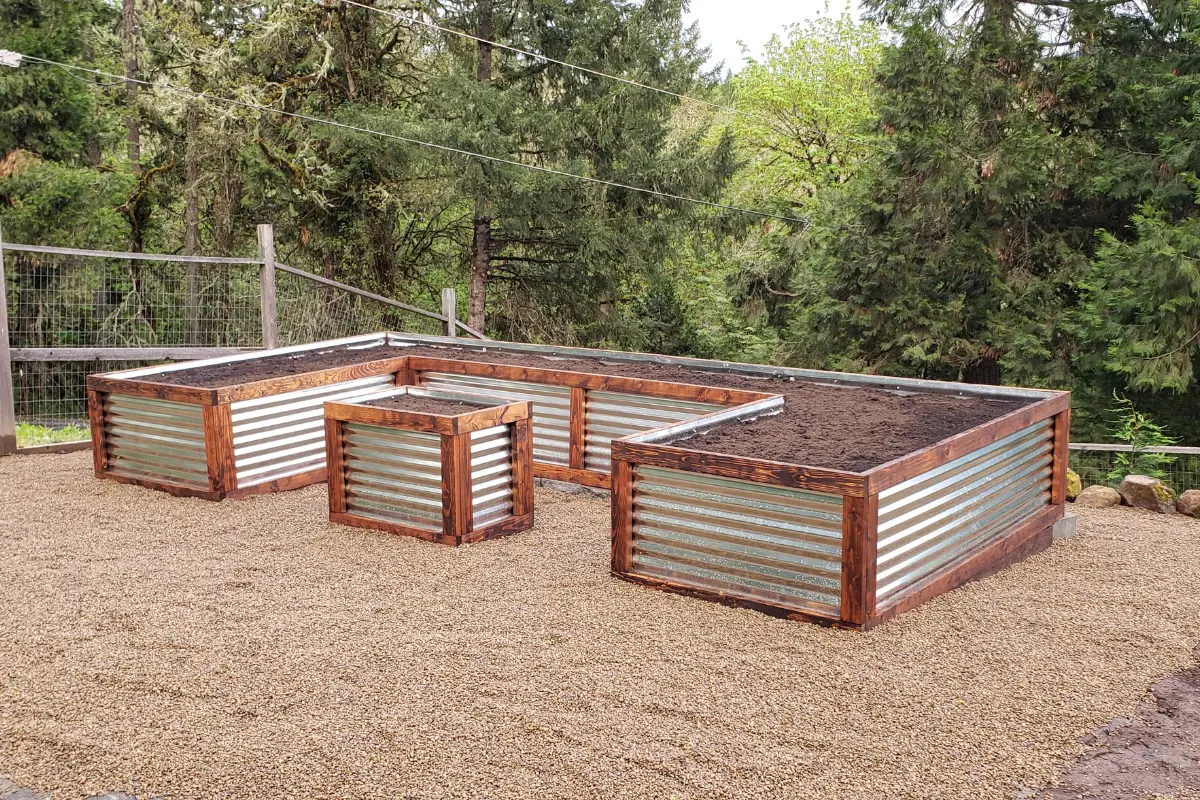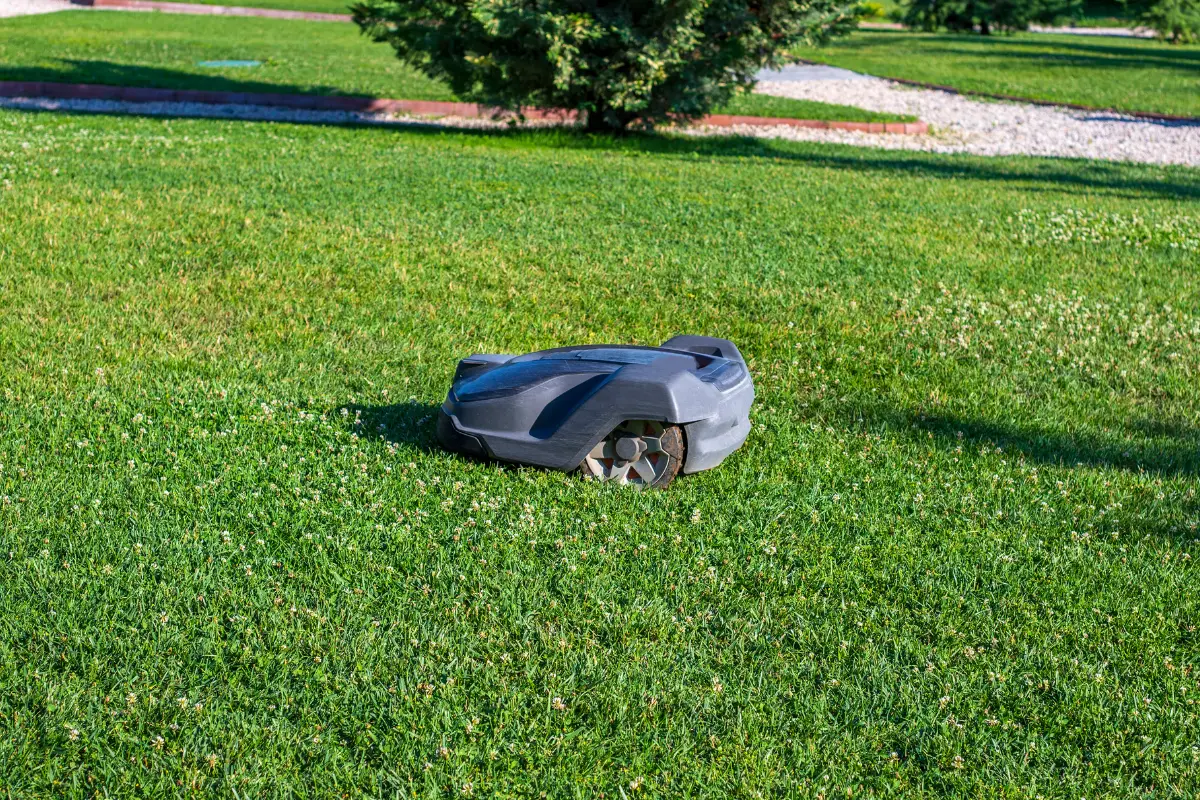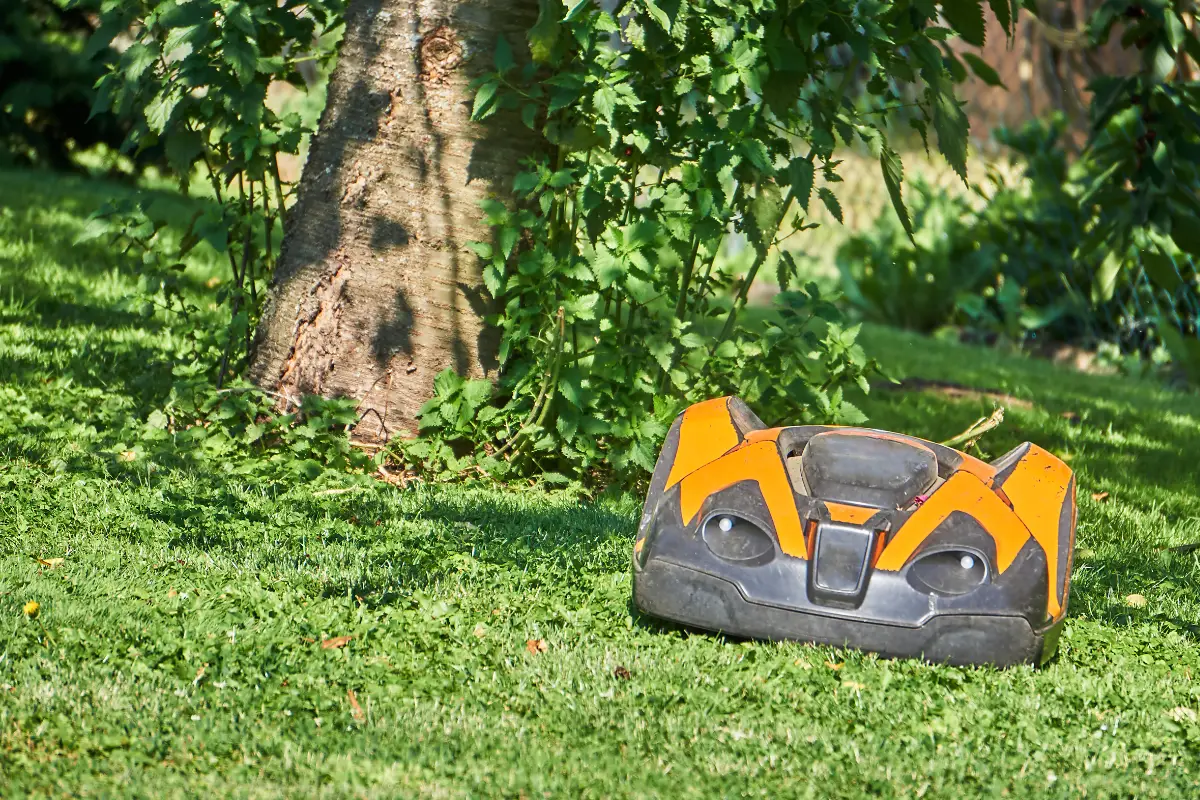Robotic lawnmowers have become increasingly popular in recent years due to their convenience and efficiency in maintaining a well-manicured lawn.
However, many homeowners are hesitant to invest in a robotic lawnmower if their yard has steep slopes or inclines.
The question remains: can robotic lawnmowers handle steep slopes?
According to research, the answer is yes, but it depends on the model and the degree of the slope.
Some robotic lawnmowers are specifically designed to handle steep slopes of up to 70%, while others are only capable of handling inclines of 20% or less.
Homeowners with steep slopes in their yard should carefully research and select a model that is capable of handling the degree of slope in their yard.
Factors to consider when selecting a robotic lawnmower for steep slopes include blade size and durability, maximum slope capacity, and overall design.
Homeowners should also consider the size of their yard and the amount of maintenance required to keep it in good condition.
While robotic lawnmowers may require a higher initial investment, they can ultimately save homeowners time and money in the long run by reducing the need for manual labor and maintenance.

Table of Contents
Understanding Robotic Lawnmowers
Robotic lawnmowers are a popular and convenient option for homeowners who want to maintain their lawns without the hassle of manual labor.
These machines are designed to cut grass automatically, without any human intervention. They are equipped with sensors and GPS technology that allows them to navigate around obstacles and follow predefined routes.
Robotic lawnmowers come in various sizes and shapes, and some models are better suited for specific types of lawns.
When choosing a robotic lawnmower, it’s important to consider the following factors:
- Blade size and durability: If you have a large yard, you might want a robot mower that has a larger blade. This will allow it to cover more ground in a shorter time frame. You should also double-check how long the blades on the robot mower are predicted to last.
- Battery life and charging time: Robotic lawnmowers are powered by rechargeable batteries, and their battery life and charging time can vary depending on the model. Some models can run for several hours on a single charge, while others may require more frequent charging.
- Slope and terrain: Not all robotic lawnmowers are designed to handle steep slopes or rough terrain. If you have a hilly lawn, you should look for a model that is specifically designed for this type of terrain.
- Noise level: Some robotic lawnmowers can be quite noisy, which can be a problem if you have neighbors who are sensitive to noise. Look for models that produce minimal noise.
Mechanics of Robotic Lawnmowers
Robotic lawnmowers are autonomous machines designed to cut grass without human intervention.
They use a combination of sensors, algorithms, and mechanical components to navigate and mow a designated area.
In general, robotic lawnmowers consist of the following mechanical components:
- Blades: Robotic lawnmowers use one or more blades to cut grass. The blades are typically located underneath the mower and rotate at high speeds to cut the grass.
- Wheels: Robotic lawnmowers use wheels to move around the designated mowing area. The wheels are usually powered by electric motors and are designed to provide traction and stability on uneven terrain.
- Sensors: Robotic lawnmowers use a variety of sensors to navigate and avoid obstacles. These sensors can include ultrasonic sensors, infrared sensors, and cameras.
- Boundary Wire: Robotic lawnmowers use a boundary wire to define the mowing area. The boundary wire is typically buried around the perimeter of the mowing area and emits a signal that the mower can detect.
Robotic lawnmowers can handle a variety of terrain types, including flat lawns, hills, and slopes.
However, not all robotic lawnmowers are created equal when it comes to handling steep slopes.
Some models are better suited for steep slopes than others, and it’s important to choose a model that can handle the specific terrain of your lawn.
Challenges for Robotic Lawnmowers on Steep Slopes
Robotic lawnmowers are becoming increasingly popular for their convenience and efficiency in maintaining lawns.
However, when it comes to steep slopes, these machines face several challenges that can affect their performance and safety.
In this section, we will discuss some of the challenges that robotic lawnmowers face on steep slopes.
Gravity and Stability
One of the primary challenges for robotic lawnmowers on steep slopes is gravity and stability. As the slope gets steeper, the risk of the lawnmower tipping over increases.
This can be dangerous for both the machine and anyone nearby. Robotic lawnmowers are designed to be stable on flat surfaces, but they may struggle to maintain stability on steep slopes.
To overcome this challenge, manufacturers have developed robotic lawnmowers with advanced stability control systems.
These systems use sensors to detect changes in the slope and adjust the machine’s speed and direction accordingly.
Some models also use additional wheels or tracks to improve stability on steep slopes.
Battery and Power Consumption
Another challenge for robotic lawnmowers on steep slopes is battery life and power consumption.
Steep slopes require more power to climb and maintain speed, which can drain the lawnmower’s battery quickly.
This can result in shorter run times and more frequent recharging, which can be inconvenient for users.
To address this challenge, manufacturers have developed robotic lawnmowers with larger batteries and more powerful motors.
Some models also use regenerative braking, which recovers energy during downhill runs and stores it in the battery for later use.
Navigation and Safety
Finally, navigating steep slopes can be challenging for robotic lawnmowers, especially if there are obstacles or uneven terrain.
The lawnmower may struggle to maintain a straight path or avoid obstacles, which can result in damage to the machine or surrounding objects.
To improve navigation and safety on steep slopes, manufacturers have developed advanced navigation systems that use GPS, sensors, and mapping technology to create a virtual map of the lawn.
This allows the lawnmower to navigate more efficiently and avoid obstacles. Some models also use safety sensors that detect obstacles and stop the lawnmower before any damage occurs.
Technological Solutions for Slope Handling
Robotic lawnmowers are becoming increasingly popular for their ability to maintain lawns with minimal human intervention.
However, one of the biggest concerns with these machines is their ability to handle steep slopes.
Fortunately, recent advancements in technology have led to the development of robotic lawnmowers that can handle even the steepest of slopes.
Advanced Sensors
One of the key technological solutions for slope handling is the use of advanced sensors.
These sensors allow the robotic lawnmower to detect changes in terrain and adjust its speed and cutting height accordingly.
For example, if the mower detects that it is on a steep slope, it will slow down to prevent it from tipping over.
Improved Traction
Another important technological solution for slope handling is improved traction.
Robotic lawnmowers are now equipped with advanced traction systems that allow them to maintain traction even on steep slopes.
These systems include larger wheels, improved tire treads, and even tracks in some cases.
Intelligent Navigation Systems
Finally, intelligent navigation systems are also important for slope handling.
These systems use GPS and other sensors to create a map of the lawn and identify areas that are too steep for the mower to handle. The mower will then avoid these areas or adjust its speed and cutting height accordingly.
Case Studies of Robotic Lawnmowers on Steep Slopes
Robotic lawnmowers have become increasingly popular in recent years due to their convenience and efficiency.
However, many homeowners are hesitant to invest in a robotic lawnmower if their yard has steep slopes.
Here are a few case studies of robotic lawnmowers that have successfully handled steep slopes:
Case Study 1: Worx WR150 Landroid L 20V
The Worx WR150 Landroid L 20V is a robotic lawnmower that is designed for gardens with slopes up to 35%.
It features powerful lithium-ion batteries and a speed adaptable to the type of terrain.
One homeowner reported that the Worx WR150 Landroid L 20V was able to handle a steep slope in their yard with ease, even though they were initially skeptical.
The lawnmower was able to navigate the slope without getting stuck or tipping over.
Case Study 2: Husqvarna Automower 450XH
The Husqvarna Automower 450XH is a high-end robotic lawnmower that is designed for large lawns and steep slopes.
It features GPS navigation and can handle slopes up to 45%.
One homeowner reported that the Husqvarna Automower 450XH was able to handle a steep slope in their yard that had previously been difficult to mow with a traditional lawnmower.
The lawnmower was able to navigate the slope without any issues and provided a clean and even cut.
Case Study 3: Robomow RS630
The Robomow RS630 is a robotic lawnmower that is designed for large lawns and steep slopes. It features dual blades and can handle slopes up to 36%.
One homeowner reported that the Robomow RS630 was able to handle a steep slope in their yard that had previously been difficult to mow with a traditional lawnmower.
The lawnmower was able to navigate the slope without getting stuck or tipping over.
Future Developments in Robotic Lawnmowers for Slope Handling
As the technology behind robotic lawnmowers continues to advance, it is likely that the capabilities of these machines will improve when it comes to handling steep slopes.
Here are a few potential future developments to keep an eye on:
Improved Traction
One of the main challenges that robotic lawnmowers face when dealing with steep slopes is maintaining traction.
However, some manufacturers are already working on solutions to this problem.
For example, the Husqvarna Automower 435X AWD is designed with all-wheel drive, which allows it to navigate inclines up to 70%.
As technology continues to improve, it is possible that other manufacturers will develop similar solutions.
Better Sensors
Another area where robotic lawnmowers can improve is in their sensors. Currently, most machines rely on a combination of GPS and boundary wires to navigate lawns.
However, if sensors become more advanced, it may be possible for robotic lawnmowers to navigate slopes more effectively.
For example, if a machine is equipped with sensors that can detect changes in elevation, it may be able to adjust its speed or trajectory accordingly.
Increased Durability
Finally, as more homeowners invest in robotic lawnmowers, manufacturers are likely to focus on making these machines more durable.
This is especially important for machines that will be used on steep slopes, as they will be subject to more wear and tear than those used on flat terrain.
By improving the durability of robotic lawnmowers, manufacturers can ensure that these machines are able to handle steep slopes for years to come.
Conclusion
In conclusion, robotic lawnmowers can handle steep slopes with ease, provided that they are designed to do so.
Many models on the market today have the ability to mow inclines up to 30 degrees, which is equivalent to a 58% grade. Some models can even handle slopes up to 70%, which is equivalent to a 35-degree incline.
When choosing a robotic lawnmower for steep slopes, it is important to consider factors such as the maximum slope angle the mower can handle, the size of the mower, and the type of wheels it has.
Mowers with larger wheels and deep treads will have better traction on steep slopes, while smaller mowers may struggle to maintain their grip.
It is also important to note that robotic lawnmowers are not suitable for all types of terrain.
They may struggle on rough or uneven ground, and may not be able to navigate around obstacles such as rocks or tree roots.
In these cases, it may be necessary to use a traditional push mower or hire a professional landscaper.
- How to Dry Basil Leaves: A Professional Guide
- Is an Avocado a Fruit or Vegetable? Simple Answer and Explanation
- Does Pineapple Have Seeds? Exploring the Anatomy of Pineapples
- Blooming Through Winter: Can I Grow Vegetables Indoors in the Winter?
- What Can You Grow in a Greenhouse All Year Round: A Guide to Year-Round Greenhouse Gardening
- Are Blueberries Blue? Debunking the Myth of Their Color
















